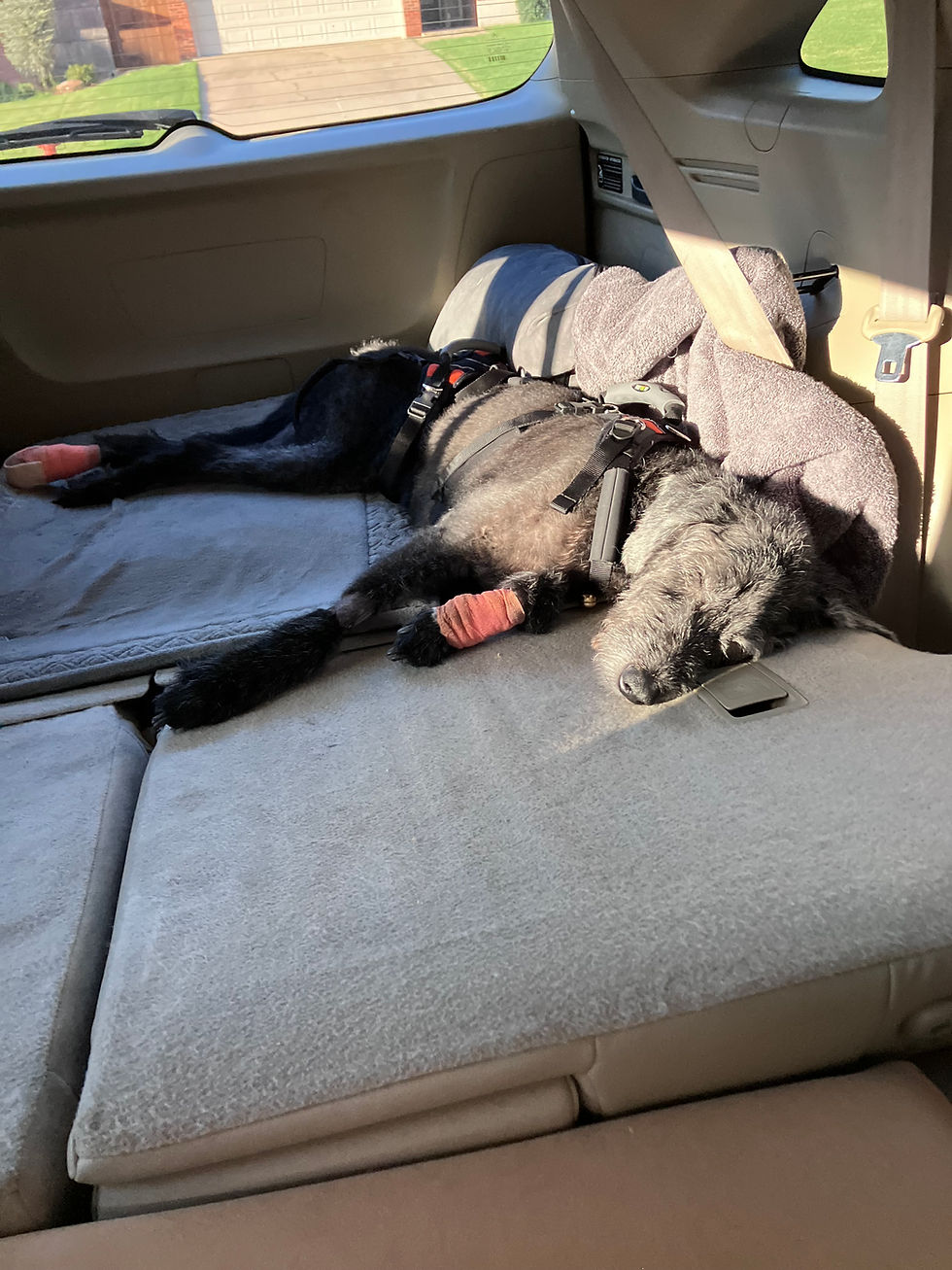Librela and/or Canine PT for arthritis management??
- Josie Gimple
- Aug 26, 2024
- 2 min read
Librela is a newer injecitable medication for dogs with osteoarthritis. Many older dogs are susceptible to arthritis and my start showing signs of slowing down, difficulty getting up, limping, or no longer wanting to play fetch or go on walks. Regardless, if your dog is showing any of these signs, it is important to be evaluated by a veterinarian to determine the best course of action to help your dog's mobility improve and pain decrease.
To be clear, I am neither encouraging nor discouraging pet owner's from taking or not taking librela. It is up to the pet owner to do their research, join facebook discussion groups, and talk to their veterinarian. Every pet is different and as their owner, you know them better than anyone.
There are some of my personal friends and veterinarians who absolutely love it, some who are against it, and some who are still on the fence or will only use it in certain situations. As with any and every medication, there is nothing that will work for everyone. All I can advise is to do your research and determine what is best for your pup and your family.
What is clear, is that for the dogs whom have had great results, there have also been injuries associated with feeling better. As humans, most of us are smart enough to know that if we suddenly have no pain that we can't go from walking to running a marathon in one day. However, dogs do not have those kinds of thoughts or restraint. Prior to the clearing of pain, the dog limited it's ability and movement. Humans and dogs alike, the saying is the same "You lose it if you don't use it". When range of motion is restricted, the muscle grow shorter and weaker. If you suddenly try to use the full range of motion instead of your restricted range of motion, there is a huge risk for injury. That is where Canine PT comes in.
Canine PT uses an individualized approach to treating your dog and their specific needs. A dog with arthritis in the front limbs will have a different focus of exercises for those in the hind legs. A certified canine rehabilitation therapist (CCRT) or a certified canine rehabilitation professional (CCRP) can help identify areas of concern and work towards slowing increasing strength, stability, and return your dog's mobility is a safe manner.
Canine Rehab can also use other modalities to help decrease pain. We utilize soft tissue work (massage, range of motion, etc), as well as laser therapy and PEMF (electromagnetic therapy) to help decrease pain. We pair these techniques with exercise to safely re-education the muscles how and when to work properly in order to provide the safest means of mobility.
If you decide that Librela is the course for you, definitely consider working with a canine physical therapist or certified rehabilitation vet or professional.
Looking for a more holistic approach? Find a certified canine rehabilitation therapist near! Check out this site to find someone near you.







Comments